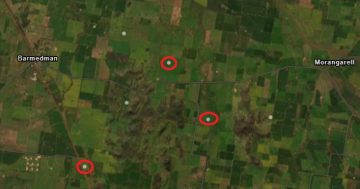
The Snowy Mountains region experienced a series of earthquakes this week. Photo: NSW NPWS.
A series of small earthquakes in the Berridale region have raised the question: can high rainfall trigger an earthquake?
Scientists around the world have researched the prevalence of earthquakes following periods of high rainfall and flooding, with mixed results.
Some researchers claim large amounts of water flowing into fault lines can increase the pressure and trigger earthquakes, while others have found that water seeping down into the earth’s core can heat up and cause tremors.
Small earthquakes around the southeastern corner of Australia are not uncommon, with Berridale residents experiencing a 2.7 magnitude earthquake just before 9:30 pm on Monday 24 October.
In the days preceding the Berridale quake, Tumbarumba shook on 21 October when a magnitude 2.1 quake struck at 11:25 pm and Boorowa was hit with a 2.2 magnitude event on 23 October at 7:30 pm.
While the recent high rainfall is not being blamed for the small earthquakes, it hasn’t been ruled out.
Geoscience Australia senior seismologist Jonathan Bathgate says “It is possible for there to be an increase in seismic activity with a lot of rain.”
However, he said the increase in activity usually occurs around dams as they become very full, very quickly.
“It does impart more stress on the local landscape and we can get more seismic activity when dams are filling up or emptying out,” Mr Bathgate said.
“It’s really hard to tell. In terms of rain-associated events, we could expect small activity around dams that are filling up quite rapidly.”
While he could not confirm whether one of the many nearby dams was to blame, with many large faults in the Snowy Mountains region, he said the recent earthquakes around Berridale were not uncommon.
Earlier this year, Berridale experienced a 2.2 magnitude quake in April and a 2.7 magnitude quake in March, which was similar to the previous year’s numbers.
“Within a 50-kilometre radius around the area, over the past 10 years we’ve had 96 earthquakes ranging from 1.4 to 3.2 magnitude, so in that respect, this is normal activity,” Mr Bathgate explained.
“We do tend to get this background activity around the country, more so in the southeastern corner of Australia – Gippsland, the ACT, and the Flinders Ranges.
“On average, we experience about 100 magnitude three earthquakes across Australia every year. These smaller ones occur almost on a daily basis and quite often go unnoticed, mistaken for a truck going past or thunder.”
On 18 May 1959, a magnitude 5.6 earthquake rocked Berridale causing minor damage as far away as Cooma, and was felt 200 kilometres away. More than 20 aftershocks were recorded.
To view recent earthquakes in your area, click here.









